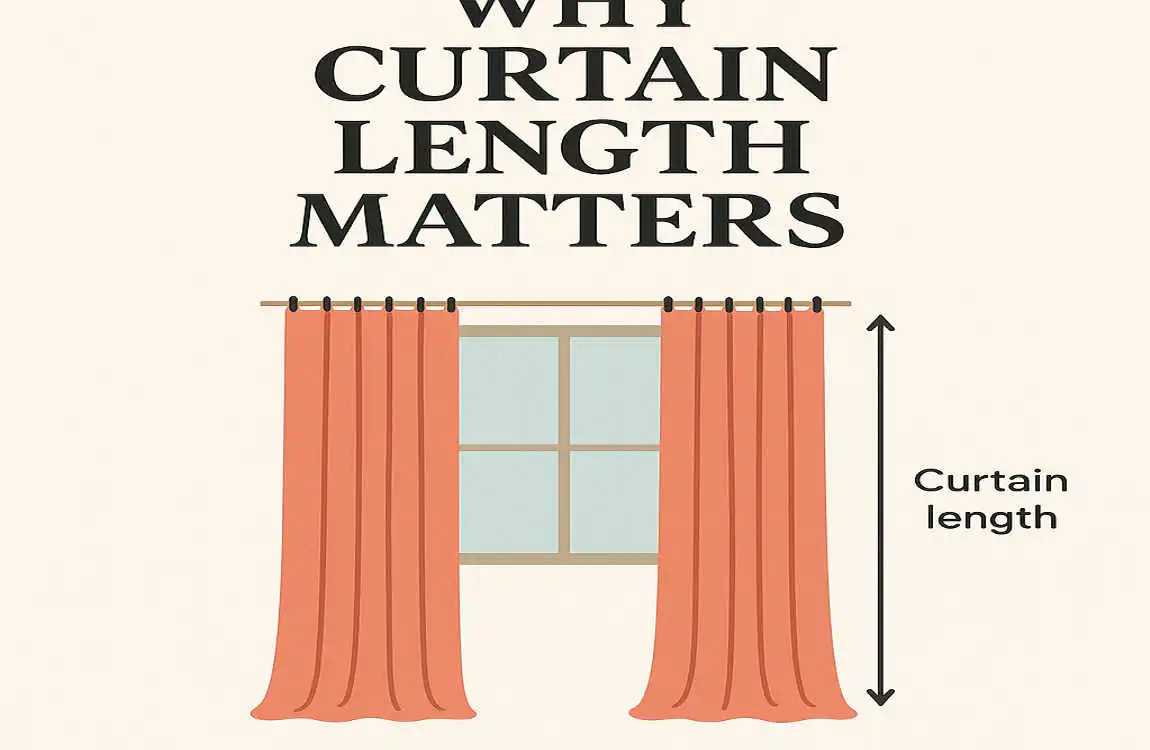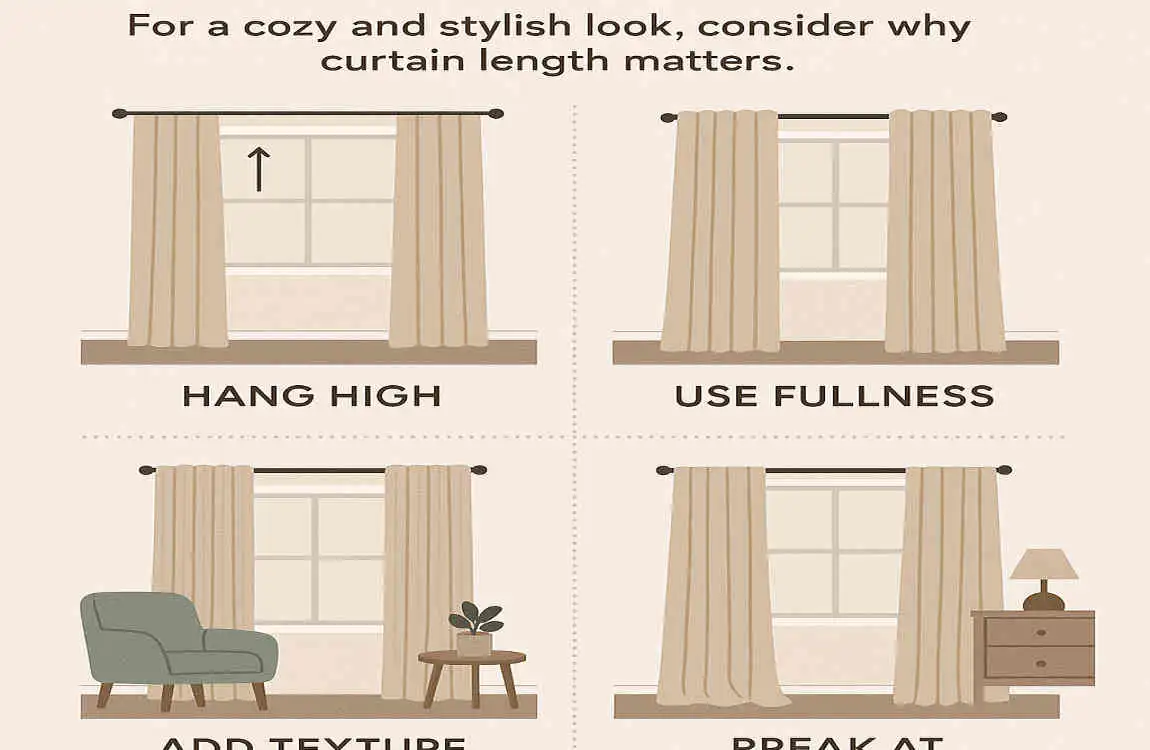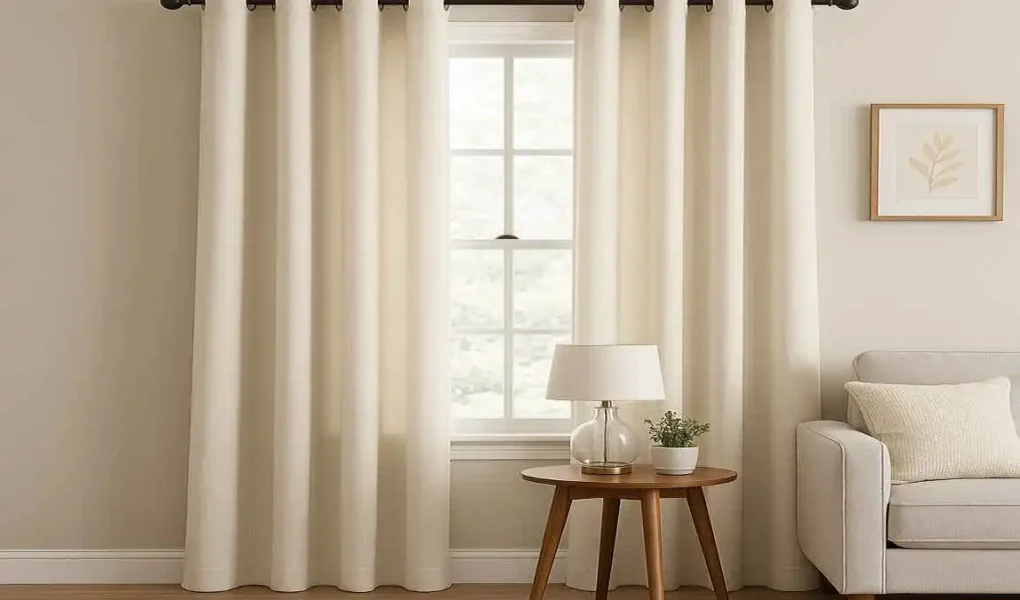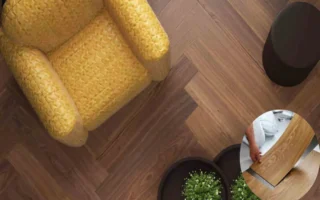When it comes to home decor, curtains play a vital role in shaping a room’s overall ambiance and functionality. However, one common question that often leaves homeowners puzzled is: Should curtains touch the floor? While this might seem like a minor detail, curtain length can make or break a space’s aesthetic.
Why Curtain Length Matters

Curtain length is more than just a design preference—it significantly impacts a room’s visual appeal, functionality, and atmosphere. Here’s why getting it right is so crucial:
Enhances the Room’s Aesthetic
The length of your curtains can dramatically change the way a room looks and feels. Floor-length curtains, for instance, exude elegance and create a sense of sophistication. On the other hand, shorter curtains might suit casual or utilitarian spaces but can feel less refined.
Affects Perceived Room Height
Long curtains that reach the floor can make the ceiling appear higher, giving the room a more spacious, open feel. This optical illusion is particularly effective for smaller rooms or spaces with low ceilings.
Defines the Room’s Style
Different curtain lengths convey distinct design styles. For example:
- Shorter curtains can feel more casual or functional.
- Floor-kissing curtains give a tailored, clean look.
- Puddling curtains add drama and luxury.
By understanding these effects, you can choose the perfect curtain length to complement your room’s vibe.
The Different Curtain Length Options Explained
When deciding whether your curtains should touch the floor, it’s essential to understand the three main curtain length styles. Each has its own charm and works best in specific situations.
Floating Curtains
Floating curtains hover just above the floor, leaving about half an inch of space between the fabric and the surface.
Benefits of Floating Curtains:
- Clean and modern look: This style works well in contemporary interiors.
- Practicality: Curtains won’t gather dust or dirt, making them easier to maintain.
- Great for high-traffic areas: Perfect for kitchens or kids’ rooms that need a neat, fuss-free look.
Floor-Kissing Curtains
Floor-kissing curtains lightly touch the floor, creating a seamless, tailored appearance.
Why Choose Floor-Kissing Curtains?
- Polished elegance: This style exudes deliberate sophistication.
- Versatility: It works in both casual and formal settings.
- Minimal maintenance: Unlike puddling curtains, they don’t drag on the floor, reducing the risk of wear or dust collection.
Puddling Curtains
Puddling curtains are longer than the room’s height, so they pool or “puddle” on the floor.
The Appeal of Puddling Curtains:
- Luxurious look: This style is often associated with opulence and classic design.
- Soft and romantic: Perfect for bedrooms, formal dining rooms, or traditional interiors.
- Customizable flair: Puddling can range from a slight pool to dramatic folds.
Downsides to Consider:
- Maintenance: Puddling curtains can collect dust, requiring more frequent cleaning.
- Not ideal for high-traffic or functional spaces: They can be a tripping hazard or get in the way in busy areas.
Expert Tips: When Curtains Should Touch the Floor

While the choice ultimately depends on personal preference and room style, there are some general guidelines to consider:
Floor-Length Curtains Are Usually Best
Most experts agree that curtains should either touch or slightly break at the floor for a polished, cohesive appearance. This style works well for living rooms, bedrooms, and formal spaces.
Functional Considerations
Practicality is key when deciding curtain length. Here are some scenarios where shorter curtains might be necessary:
- Radiators or Heating Vents: If you have heating elements below your windows, longer curtains can block airflow and reduce efficiency. In such cases, opt for curtains that stop just above the radiator.
- Kids’ Rooms or High-Traffic Spaces: Shorter curtains are safer and easier to manage in areas where children play, or people frequently walk by.
Tailor Curtain Length to the Room and Fabric
- Formal Rooms: Opt for floor-kissing or puddling curtains to enhance elegance.
- Casual Spaces: Floating curtains work better for relaxed, everyday settings.
- Fabric Choice: Sheer and lightweight curtains often look better when they float, while heavy drapes create a striking effect when they puddle.
Measuring for the Perfect Curtain Length
Measuring your curtains correctly is essential to achieve the desired look. Here’s a step-by-step guide to help you get it right:
Measure from the Rod to the Floor
- Start from the top of the curtain rod or track.
- Measure straight down to the floor for an accurate length.
Adjust for Carpet or Hard Floors
- For carpeted floors: Add an extra ¼ to ½ inch to ensure the curtains touch seamlessly.
- For hard floors: Curtains can be measured exactly or left slightly floating for a cleaner look.
Account for Style Preferences
- For floating curtains: Subtract about ½ inch from the total measurement.
- For floor-kissing curtains, measure precisely.
- For puddling curtains, add 2-6 inches (or more) to achieve the desired puddling effect.
Curtain Styles and How They Affect Length Choice

The type of curtain you choose can also dictate its ideal length.
Sheer Curtains vs. Heavy Drapes
- Sheer Curtains: These are lightweight and often look best when they float or kiss the floor.
- Heavy Drapes: Thick fabrics like velvet or brocade can handle puddling well, adding drama to the room.
Curtains for Privacy or Blockout
In bedrooms or media rooms, where privacy and light control are key, floor-length curtains that kiss the floor are ideal. They provide full coverage and block out light effectively.
Modern vs. Traditional Spaces
- Modern Interiors: Clean lines and simplicity often call for floating or floor-kissing curtains.
- Traditional Interiors: These often feature puddling curtains for a more dramatic effect.
Common Mistakes with Curtain Length
Even with the best intentions, it’s easy to make mistakes when choosing curtain lengths. Avoid these pitfalls:
Curtains That Are Too Short
Short curtains can make a room feel unfinished and awkward. It’s often better to err on the side of longer curtains.
Excessive Puddling
While puddling can look beautiful, too much fabric can appear messy and become a hassle to clean.
Ignoring Room Function
Always consider the room’s purpose. For example, puddling curtains in high-traffic areas or pet-friendly homes might not be practical.
Styling Tips to Achieve the Cozy and Stylish Look

To create a warm and inviting space with curtains, keep these styling tips in mind:
- Pair Curtains with Window Treatments: Layering curtains with blinds or shades can add depth and functionality.
- Choose Rich Fabrics: Linen, velvet, or cotton blends can enhance the cozy factor.
- Coordinate with Furniture: Match or complement the color and texture of curtains with your furniture and decor.
Should Curtains Touch the House Floor? FAQ
Should curtains touch the floor?
Yes, in most cases, curtains should touch the floor. Floor-length curtains create a polished, elegant look and help accentuate the height of a room. According to interior designers, curtains that lightly touch or skim the floor are the most popular choice for achieving a tailored and cohesive appearance .
Why is it important for curtains to touch the floor?
Curtains that touch the floor enhance the overall aesthetic of a room by creating a sense of balance and sophistication. They also make ceilings appear higher, which can make a space feel larger and more open. Additionally, floor-length curtains are versatile and work well in both modern and traditional interiors.
Are there situations where curtains shouldn’t touch the floor?
Yes, there are certain scenarios where shorter curtains might be more practical:
- High-traffic areas: In kitchens, bathrooms, or kids’ rooms, curtains that hover slightly above the floor are easier to maintain and less likely to get dirty or damaged .
- Heating vents or radiators: If there are heating elements below your windows, shorter curtains can prevent airflow obstruction and improve efficiency.
- Pet-friendly homes: Curtains that puddle on the floor can attract pet hair and dirt, making them harder to clean.
What are the different curtain length styles?
There are three main curtain length styles to choose from:
- Floating Curtains: These hover about ½ inch above the floor, offering a clean and modern look.
- Floor-Kissing Curtains: These lightly touch the floor, creating a tailored and elegant appearance.
- Puddling Curtains: These are longer than the room’s height and pool on the floor, adding a luxurious and dramatic effect.
What’s the best curtain length for a living room?
For living rooms, floor-kissing curtains are often recommended. They provide a polished and elegant look that complements both formal and casual spaces. Floating curtains are also a great option for modern or minimalist living rooms.
How do I measure for the perfect curtain length?
To measure for curtains:
- Start from the top of the curtain rod or track.
- Measure straight down to the floor.
- Adjust based on your preferred style:
- For floating curtains, subtract ½ inch.
- For floor-kissing curtains, use the exact measurement.
- For puddling curtains, add 2-6 inches depending on the desired puddling effect.




